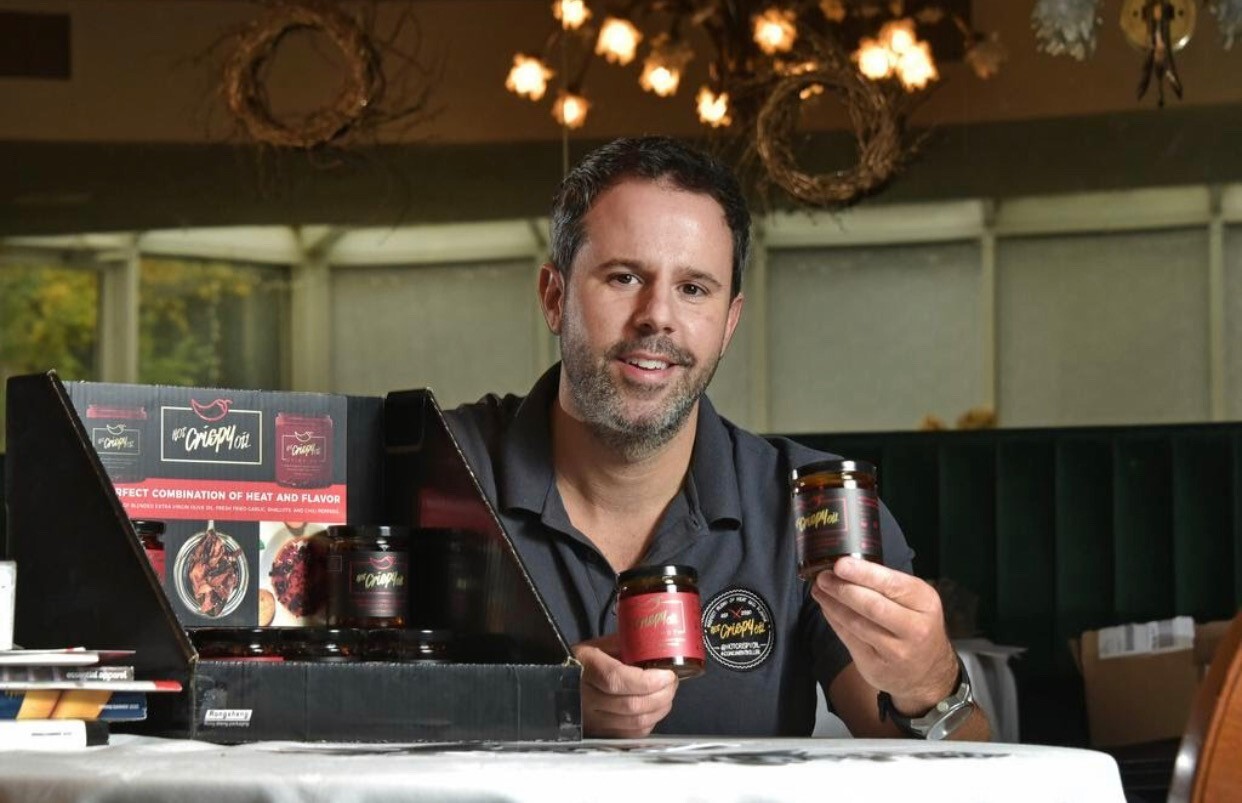Crafting your compelling brand story

A compelling brand story sets your small business apart and builds a lasting customer connection.
Have you ever heard a fascinating story about how someone was inspired to launch their business? Do you buy from brands because their values line up with yours? When did you choose a product because something about the brand made you feel connected to something bigger?
Consumers make buying decisions every day, often based on a compelling brand story. Your story reveals what inspired your business, the values you stand for, and how your product improves lives. It shows up on your website, packaging, and even in your brand’s colors and fonts. A strong brand story is an emotional hook that builds trust, attracts the right customers and turns them into loyal advocates.
The power of good storytelling can be the difference between a customer wanting to learn more about your company or not, and often, this is a split-second decision. So, telling your story in the right way is essential. In March 2025, Andrea Marquez, host and producer of Amazon’s This is Small Business podcast, led a webinar about crafting your compelling brand story. She’s been a storyteller for over 10 years and has interviewed 100+ entrepreneurs. With that experience, she’s formulated three steps for crafting a brand story that will resonate.
Step 1: Understand your customers
A strong brand story isn’t just about you and what your product or service offers. It’s also about your customer and how your product fits into their life. “Purchasing decisions reflect who we are or aspire to be,” explains Marquez. “As a brand owner, you are tasked with creating a story that resonates.” Think about the following before crafting your brand story:
• Who is your ideal customer? Be as specific as you can when thinking about their lifestyle, mindset, values and habits.
• What does your ideal customer need? Identify their pain point and how your product helps to eliminate that challenge.
• What transformation is your customer looking for? Understand how their lives might improve after they engage with your brand.
Once you have a clear picture of your customers, it’s time to start developing the brand story you want to tell them.
Step 2: Put your story together
Good stories have a setup, a conflict, a turning point and a resolution. Here’s what to think about when setting up the story structure:
Purpose: From a business perspective, the story you craft about your brand should include the “why.” Think about why you created your brand. For example, your business may have started with you identifying a challenge or wishing a specific product existed.
Authenticity: Your story should be genuine and relatable. Don’t over-polish it or pretend to be something you’re not. Today’s consumers crave honesty and can tell when something’s not feeling right.
Emotion: People connect with emotions, not just facts. You want your story to give customers a sense of belonging, confidence, relief, and excitement.
Solution: What is the problem that your product or service solves? Your brand should be the solution to your customer’s challenge. Don’t just think about what you do; think about the change you’re here to make for your customers.
“Think of your brand story like a movie. You're not the main character, your customer is,” Marquez advises. “Your job is to be the wise mentor guiding them toward their transformation.”
Marquez recommends asking yourself three questions to help craft and structure your story.
1. What inspired you to start your business?
2. What difference do you want your business to make?
3. How does your product help people?
“The goal here is to start shaping your brand story from the inside out,” she adds. “Your story is already inside of you - you just have to uncover it and tell it with clarity and confidence.”
Step 3: Share your story
Once you’ve crafted the core of your brand story, you will want to share it in a way that resonates with your target audience. Here are a few tips for sharing the message:
Show, don’t tell. Use real transformation stories from your customers or community and let people recognize themselves in other people’s experiences.
Be consistent across channels. Your website, social media, product packaging and even customer service should all tell the same story because consistency builds trust.
Use visuals. Given how visual our daily lives are now with social media, visuals can help reinforce your message. From the product photography to behind-the-scenes moments, your visuals must match your tone and values. If possible, use video because it’s how more and more people digest content, and video helps bring movement and voice to your story.
Keep it human. Avoid polished language and make it feel like you’re speaking to a real person. Think about how you speak to a person - you want it to be warm, clear and true to your brand's personality.
Communicate benefits. Focus on the difference your brand is making - are your products solving problems, creating joy, or building a community? You want to show how your work matters.
The way the story is delivered is also meaningful, Marquez says. Speak passionately and authentically and avoid sounding monotone or disconnected. Your tone of voice, body language and energy communicate how much you genuinely care. In fact, non-verbal communication makes up more than 90% of how people perceive your message, according to Albert Mehrabian’s communication studies.
Your story delivery should also be clear and concise. Don’t try to communicate everything at once – get to the heart of your story and keep it simple. A simple problem, solution and impact flow helps people follow along.
Practice your brand storytelling until it feels natural. You don’t need to memorize it, but you need to be comfortable telling it. Rehearse it alone and rehearse it in front of others.
“Loyal customers are buyers but they’re also believers,” Marquez concludes. “If your story makes them feel like they belong, they’ll stick with you through the long run and it will become part of their identity as well.”




.jpg)
.png)
















.webp)





-min.jpg)



.jpg)